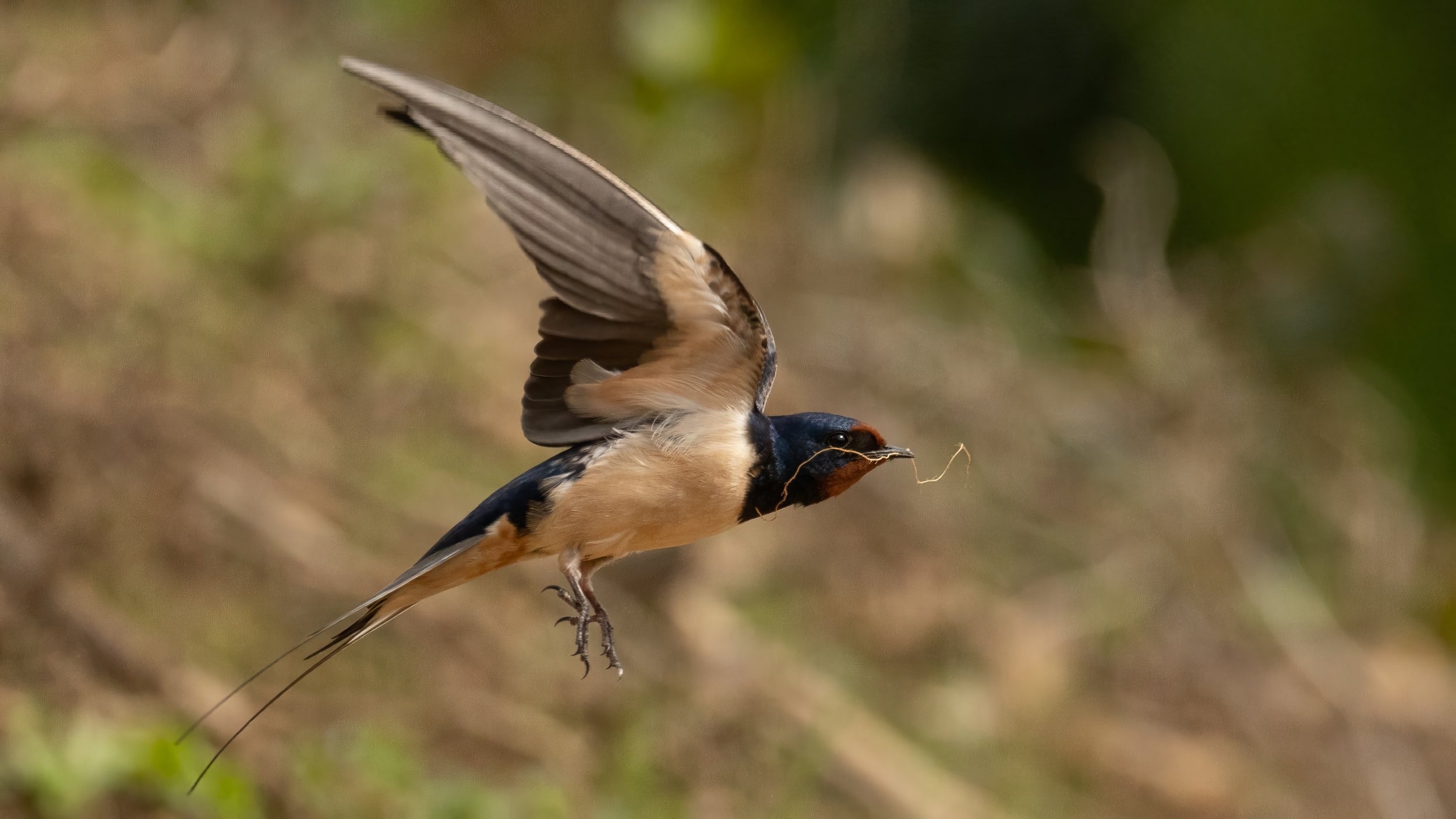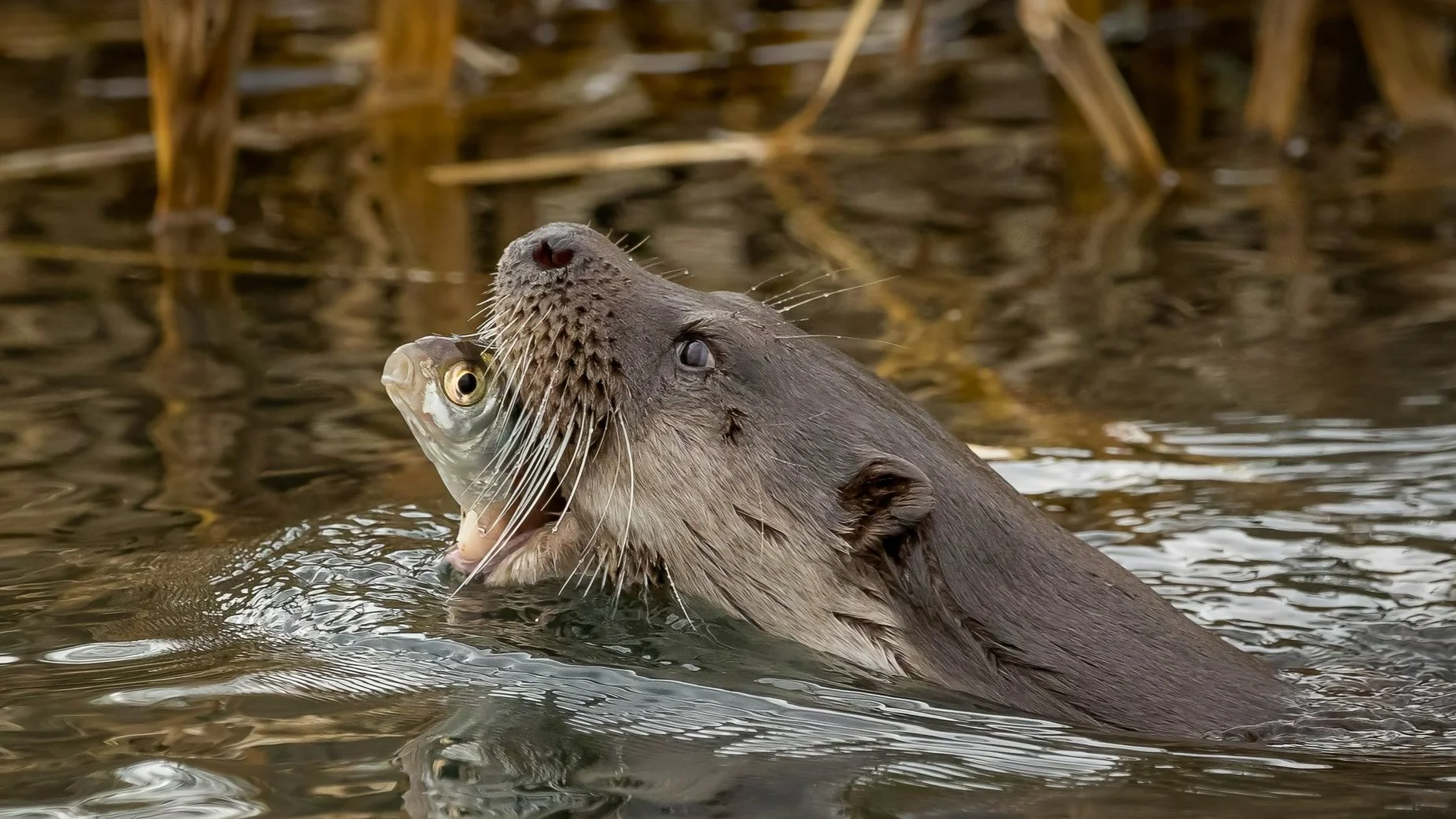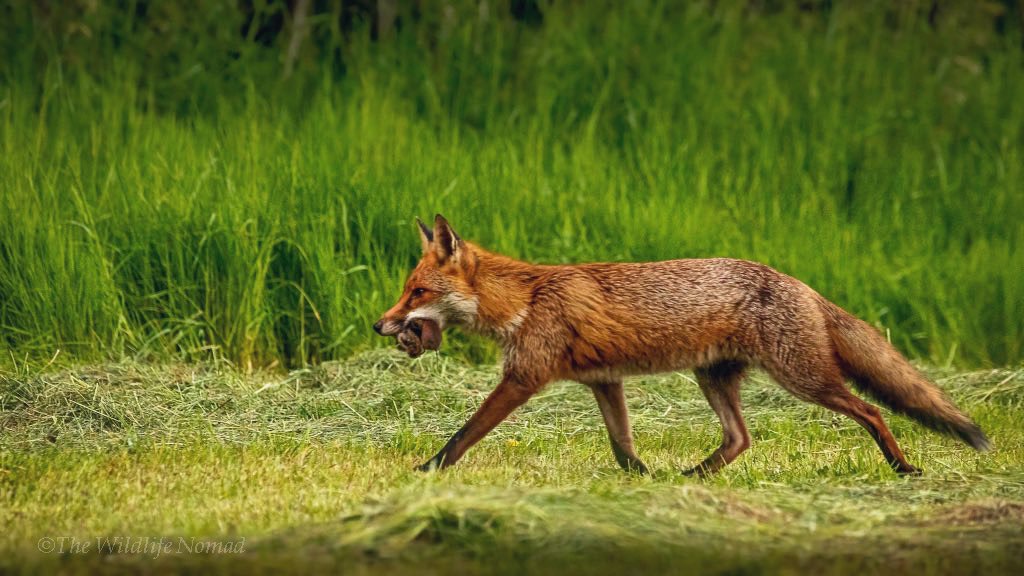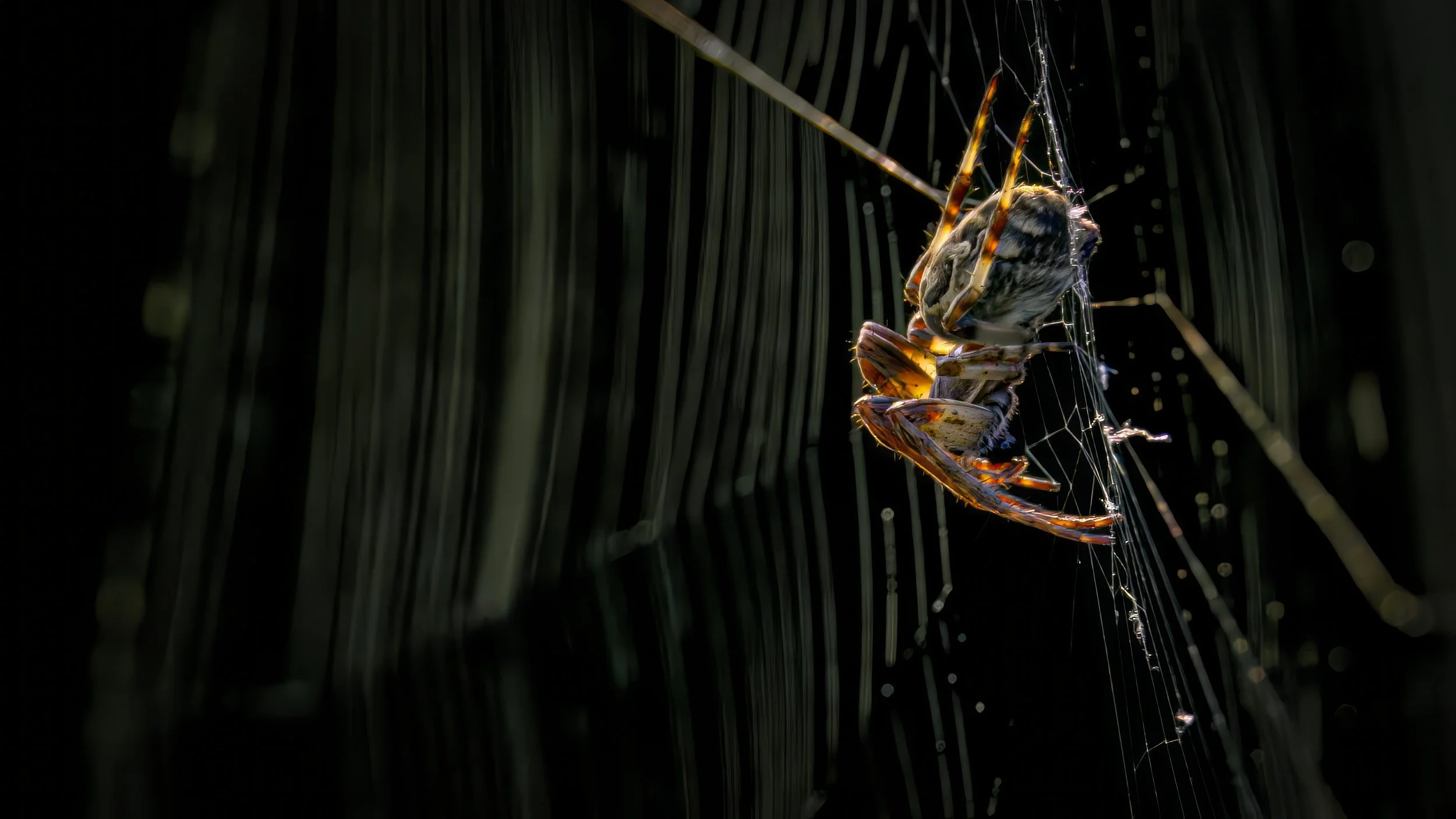Fieldcraft Friday: Old country wisdom for wildlife photographers
Before smartphones and forecasts, country folk read the skies, the fields, and the animals. Farmers, gamekeepers, and shepherds knew the signs: how animals reacted to subtle changes in pressure, wind, and temperature, and what those reactions foretold.
For wildlife photographers, this kind of knowledge is more than folklore. It’s a practical way to understand wildlife behaviour and make better decisions in the field. When you can predict a weather shift, or a seasonal change, based on what the animals are doing, you’re more likely to be in the right place at the right time.
Here are five traditional animal signs that can help you forecast both short-term and seasonal changes, and how each one can improve your chances of capturing powerful, timely wildlife images.
Birds Flying Low or Going Quiet Before Rain
Old saying: “When swallows fly low, rain’s on the go.”
Birds are some of the most sensitive indicators of air pressure. Insect-eaters like swallows, swifts, and martins follow their prey—which flies lower in humid, low-pressure conditions. Songbirds, too, often fall silent before a storm.
Why it matters to photographers:
Low-flying birds or sudden quiet is your early warning of weather on the move. But it’s also a signal that animals may be feeding more actively in the build-up to rain. You’ve got a brief window for action shots—fast, close passes, flurries of flight, or quiet pre-storm portraits in soft, even light. It’s also a cue to scout for post-rain behaviour once the weather breaks.
Fish Rising = Settled, Dry Conditions Ahead
Old belief: “When fish jump high, the air is dry.”
In calm, stable conditions, fish like trout or carp often rise to feed near the surface. It’s a classic sign of high pressure and clear skies. During unsettled weather, they usually stay deeper.
Why it matters to photographers:
If fish are active, it likely means good light, low wind, and a stable spell of dry weather. That opens up possibilities for photographing water-loving species: kingfishers hovering, herons stalking, dragonflies basking, Otters feeding. Reflections are cleaner, surface tension is higher, and behaviour is more predictable—perfect for building a small body of work around a particular wetland or stream.
Mammals Feeding Early = Incoming Change
Old saying: “The fox hunts early, the weather turns late.”
Wild mammals often change their feeding times or become more visible before weather shifts. Before a cold snap or storm, deer may move into the open mid-afternoon; foxes might hunt in daylight to take advantage of dry conditions while they last.
Why it matters to photographers:
These shifts are your cue to move fast. If you spot a roe deer feeding two hours earlier than usual, there’s likely a front moving in. These pre-storm or pre-frost windows often deliver dramatic skies, soft contrast, and bolder behaviour—ideal conditions for storytelling. It’s also a chance to experiment with wide lenses and include more of the environment in your frame.
Frogs and Toads Emerging………..Rain on the Way
Old sign: “When the toads walk, the clouds talk.”
Amphibians are incredibly responsive to rising humidity and falling pressure. They often emerge en masse ahead of rain, especially in spring and summer, to feed or move toward breeding sites.
Why it matters to photographers:
This is a dream for macro and close-up work. Use a low perspective to capture damp textures, reflections, and surface tension. Look for snails, slugs, and their predators on the move. Even birds and mammals may become more active in response. Rain may be coming—but so is a chance to capture quiet, intimate moments full of mood and detail.
Coat or Plumage Changes Herald a Seasonal Weather Shift
Old wisdom: “When the hare turns white too soon, snow’s not far behind.”
In the past, farmers and stalkers watched how early (or late) animals began to moult or change coats. Hares, deer, lizards, foxes, and birds all adjust their coats, skins and plumage in response to daylight and temperature, but the timing often reflects bigger patterns in seasonal weather.
Why it matters to photographers:
These changes are subtle indicators of what’s coming: a mild autumn, an early winter, or a delayed spring. Moulting animals present strong photographic opportunities— skin, fur and feather transitions, changing behaviour, seasonal feeding or mating patterns. If you spot early coat changes, it’s time to plan your rutting, foraging, or winter-weather shoots.
Final Thoughts
This isn’t superstition. It’s observation: patient, grounded, time-tested. The kind of knowledge passed down by people who lived and worked with the land, who couldn’t afford to be wrong about when to plant, when to shelter livestock, or when to harvest. These traditional signs have endured because they’re rooted in the lived reality of the natural world. Animals don’t second-guess the weather; they respond to it directly, instinctively, and sometimes long before the clouds gather.
As wildlife photographers, tuning into those signals gives us something rare: alignment. We stop reacting and start anticipating. You learn to read the silences, the sudden movement, the way the wind changes the posture of a deer or the rhythm of birdsong in a wood. That awareness makes you more than a visitor in the landscape, you become part of it, alert to its rhythms.
This kind of fieldcraft doesn’t just help you capture better images; it deepens your connection to place. You’ll start to notice how a drop in pressure brings mist to a familiar valley, how toads cross a path only under certain moonlit showers, or how a buzzard’s flight tells you something about tomorrow’s light. Over time, these observations stack up into intuition, a creative instinct grounded in nature, not apps.
And when you build that instinct, your photography becomes more than sharp or well-composed. It becomes timely. Authentic. Connected to the moment. Because you weren’t just there, you were ready.
So watch the land. Trust the animals. Let nature reveal itself, and be ready!
Other Interesting Blog Articles
How Wind Affects Wildlife Movement: Fieldcraft Guide to Reading Scent, Sound and Behaviour
How to Read Winter Hedges for Wildlife Behaviour and Fieldcraft
Listening as Fieldcraft: How Sound Awareness Transforms Your Wildlife Photography
—————————————————
FAQ: Old Country Wisdom & Wildlife Photography
What is old country wisdom in wildlife photography?
Old country wisdom refers to practical, experience-based knowledge passed down by farmers, gamekeepers, woodsmen, and naturalists long before modern field guides or camera technology existed. In wildlife photography, it means reading wind direction, ground moisture, hedge structure, slope aspect, animal trails, and seasonal patterns to predict behaviour. It prioritises observation over chasing shots and helps photographers find wildlife behaving naturally rather than reacting to disturbance.
How do wildlife photographers read the landscape to find animals?
Photographers read the landscape by looking for how animals move through it rather than where they might appear randomly. This includes following hedge lines, woodland edges, dry ground after rain, south-facing banks in winter, shaded north-facing cover in summer, and natural funnels such as gates, fallen trees, or stream crossings. Old country wisdom teaches that animals take the easiest, quietest, and safest route, and those routes rarely change without good reason.
Why does wind direction matter so much in wildlife photography?
Wind direction is critical because most mammals rely heavily on scent. Old fieldcraft teaches that animals usually travel into the wind so they can smell danger ahead. For photographers, approaching with the wind in your face reduces the chance of being detected. Ignoring wind direction is one of the most common reasons photographers fail to see wildlife even in areas where animals are present.
How can traditional fieldcraft improve ethical wildlife photography?
Traditional fieldcraft reduces disturbance by encouraging patience, positioning, and prediction rather than pursuit. By understanding where animals are likely to travel, feed, or rest, photographers can wait quietly in the right place instead of pushing closer. This results in calmer behaviour, more authentic images, and far less stress on the animal. Old country wisdom aligns naturally with ethical photography because it values restraint and respect over forcing encounters.
Is old country wisdom still relevant with modern cameras and technology?
Yes, and arguably more than ever. Modern cameras can capture incredible detail, but they cannot compensate for poor fieldcraft. Old country wisdom helps photographers get close without alarming wildlife, choose better light by understanding terrain, and anticipate behaviour rather than reacting too late. Technology improves the image, but fieldcraft determines whether the image is possible at all.







